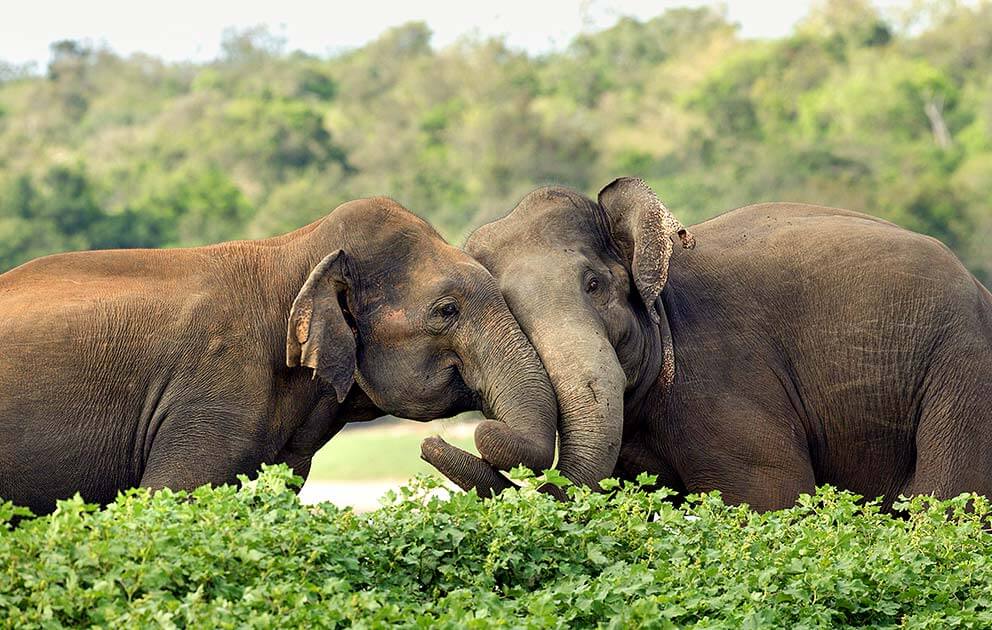Sri Lanka's Elephant-Human Conflict - A Growing Crisis in Need of Solutions

Sri Lanka, a nation renowned for its rich biodiversity, faces a heartbreaking dilemma: a burgeoning human-elephant conflict (HEC). While revered in Sri Lankan culture, elephants are increasingly at odds with a growing human population, leading to tragic consequences for both.
The Escalating Conflict: A Grim Reality
The statistics paint a stark picture. According to the Centre for Conservation and Research, Sri Lanka witnesses an alarming number of elephant and human deaths annually due to HEC:
- Over 200 elephant deaths occur yearly, primarily due to electrocution, train accidents, and retaliatory killings.
- Approximately 50 human fatalities are attributed to elephant attacks, often stemming from crop raiding incidents.
These figures underscore the urgency of the situation. The conflict not only threatens the survival of Sri Lanka's iconic elephants, listed as "Endangered" by the IUCN, but also jeopardizes the livelihoods and well-being of rural communities.
Unraveling the Root Causes: A Complex Interplay of Factors
Understanding the drivers of HEC is crucial for formulating effective mitigation strategies. The issue is multifaceted, stemming from:
1. Habitat Loss and Fragmentation: A Shrinking Space for Elephants
Sri Lanka's elephant population, estimated at around 7,500, faces mounting pressure from habitat loss and fragmentation. Deforestation for agriculture, settlements, and infrastructure development has shrunk elephant ranges, forcing them into closer proximity to humans.
2. Human Encroachment: Living on the Edge of Wild Spaces
As the human population grows, settlements and agricultural lands increasingly encroach upon traditional elephant corridors and foraging grounds. This encroachment intensifies encounters between humans and elephants, escalating the potential for conflict.
3. Crop Raiding: A Struggle for Survival
Elephants, with their large appetites, often raid crops for sustenance, particularly during periods of food scarcity. This behavior, while natural, leads to significant economic losses for farmers, fueling frustration and retaliatory actions.
Seeking Sustainable Solutions: A Multi-pronged Approach
Addressing the complex challenges of HEC demands a comprehensive strategy involving various stakeholders. Promising solutions include:
1. Habitat Restoration and Connectivity: Reconnecting Fragmented Landscapes
Protecting existing elephant habitats and restoring degraded areas is paramount. This involves afforestation efforts, promoting sustainable land-use practices, and establishing ecological corridors to connect fragmented forests.
2. Community-Based Conservation: Empowering Local Communities
Engaging local communities living near elephant ranges is essential. Initiatives like elephant awareness programs, promoting alternative livelihoods, and providing compensation for crop losses can foster coexistence.
3. Effective Mitigation Strategies: Minimizing Human-Elephant Encounters
Implementing practical mitigation measures can significantly reduce conflicts. This includes erecting electric fences around farmlands, using early warning systems to alert communities of elephant movements, and establishing community-based elephant monitoring programs.
4. Policy and Law Enforcement: Strengthening Protection Measures
Stronger law enforcement is crucial to curb illegal activities like poaching and encroachment into protected areas. Revisiting and strengthening existing policies related to land use, wildlife conservation, and human-wildlife conflict management is vital.
Looking Ahead: A Collective Effort for Coexistence
The human-elephant conflict in Sri Lanka presents a significant conservation challenge, demanding urgent and sustained action. Finding a balance between the needs of both elephants and humans is key to ensuring their long-term survival. By embracing a multi-pronged approach that combines habitat conservation, community engagement, effective mitigation, and robust policy measures, Sri Lanka can pave the way for a future where elephants and humans coexist harmoniously.

/https://static.texastribune.org/media/images/AmericanBlackBear.jpg)

:max_bytes(150000):strip_icc()/rainwater-harvesting-system-isometric-diagram-1201105579-34cb7b27492f42c387b89fd903a16ba4.jpg)













Comments ()